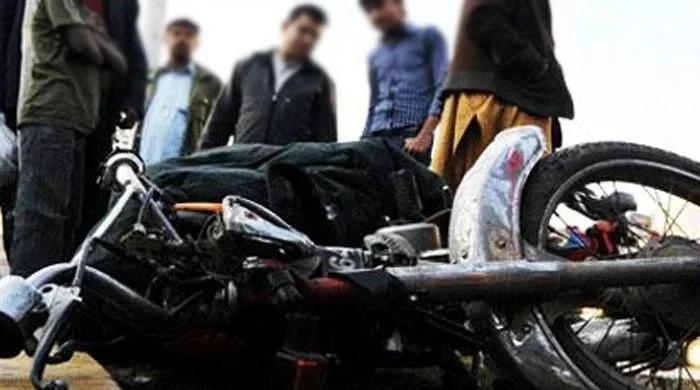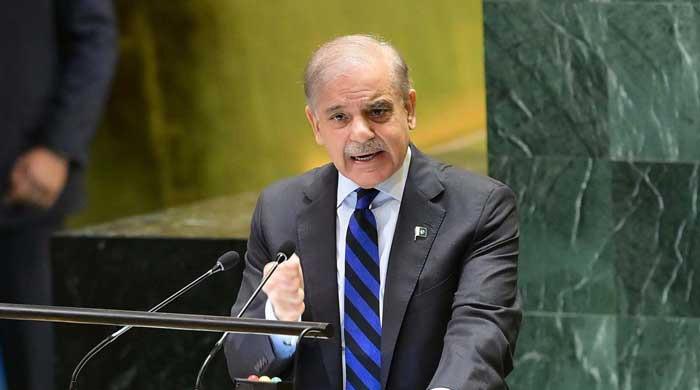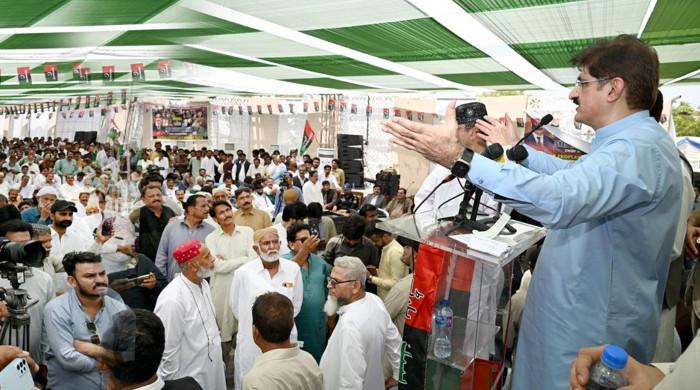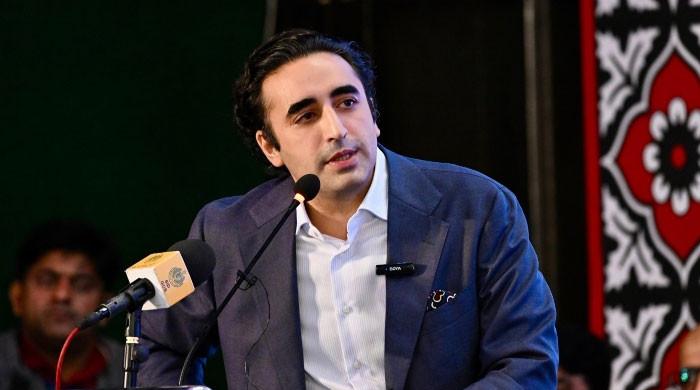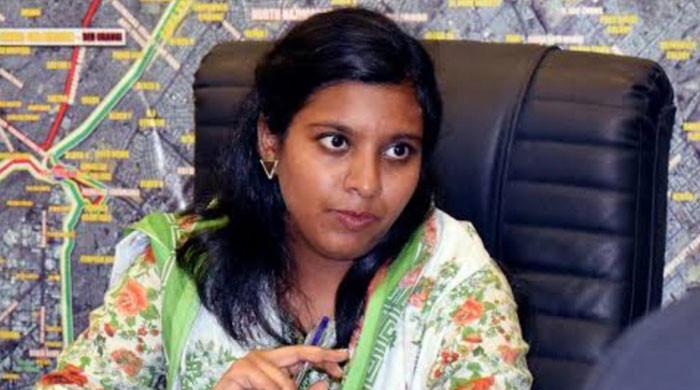50 years of faith: The Hindu temple in Karachi University
Historic 'Jugat Devi' mandir represents vibrant mosaic of cultures at University of Karachi
October 25, 2023
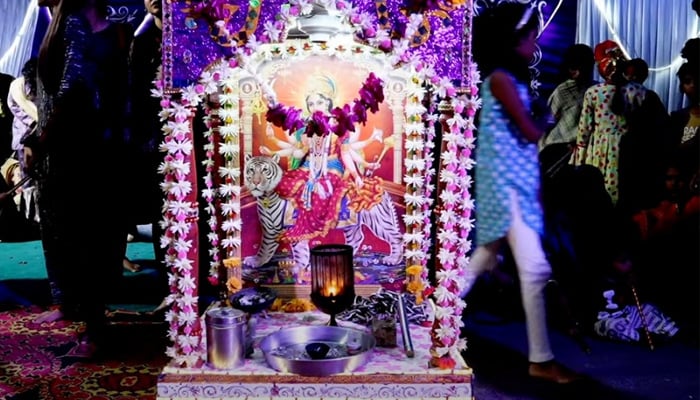
If you studied at Karachi University, you may be familiar with this 50-year-old historic temple located inside the campus, but many others might not.
Before reading this write-up, let us first help you with the road map to reach this temple if you ever plan to visit.
The path to Block G at the Karachi University from Maskan Chowrangi passes past the Pharmacy and Chemistry departments. You have to turn right from this straight road and enter the Servant Society to visit the temple.
The Block G is allocated to the long-term Hindu, Christian, and Muslim employees of the Karachi varsity for residence.
It was the seventh night of Navaratri when we reached there. Almost half of the streets were shrouded with darkness, except a few where Nawratri celebrations were going on in full swing.
The houses of Hindus — along with the street to the Mandir, were lit up with fairy lights to welcome the devotees.
We arrived at the temple with the assistance of a resident named Salim. We were told that the residents of the society are very reserved and not welcoming, yet despite being a Christian, Salim guided us to the temple, where the Hindu community greeted us warmly.
The one-room 'Jugat Devi' temple appeared to be a mandir like any other, but its story was fascinating.
We struck up a chat with Sham Lal — a worshipper — who informed us that his family had been living there for many years before the temple's construction in 1973.
This is not the only temple constructed in KU’s Block G, as the Rama Peer Temple and Hanuman Temple also come within its building.
"This temple has been built with the financial backing of the Hindu residents of the university, we are grateful to Jamia for allowing us to construct our place of worship within the campus," Lal said.
He told us that the temple was set up by the Hindu Panchayat. Earlier, the Hindus used to go to the temple in Clifton for worship, which was challenging for them since they had to go from one end of the city to the other.
"This temple was founded by Shankarbhai Vaghela, Heerabhai Vaghela, Kalidas Makhwade, and Kishan Hamusa who lived here for about sixty years," Lal added.
"The community submitted a letter to the university — requesting to allow them to bring material to the campus to build the RCC roof for the temple's building. The upper part of this temple will be built with the cooperation of Hindu Panchayat," he stated.
"In our festivities, Muslims, as well as Christians, actively participate and convey their good wishes during the celebrations. We reciprocate by joining in their festivities as well. However, university students, particularly those pursuing studies in Sindhi, political science, and media sciences, frequently orient themselves towards temples and churches for their academic assignments — Sham Lal expressed the perspectives of the Muslim and Christian communities residing in the vicinity of the temple.
"The University of Karachi is a vibrant mosaic of cultures where you'll find a diverse tapestry of individuals from all walks of life," Dr Hassan Auj, a syndicate member of the university, also shared deep-rooted ties with the denizens of G Block.
In a conversation with Geo Digital, he revealed that they share a harmonious rapport with the Hindu and Christian communities residing in the university's vicinity, often partaking in their joyous celebrations.
When asked about the presence of a temple on the university grounds, Dr Hassan painted a vivid picture of the institution.
Each year, the University of Karachi bestows degrees upon a staggering 45,000 students, among them, he proudly includes himself.
"This venerable institution in Karachi serves as a gateway to enlightenment and a profound sense of awareness. Within its hallowed grounds, you'll encounter a temple, a church, an Imambargah and a mosque, each standing as a testament to the city's rich religious diversity. Together, they weave a captivating tapestry of faith and tradition," he added.
Dr Auj underscored the peaceful coexistence of the university's inhabitants, suggesting that if young minds approach these communities with open hearts and curious spirits, they will come to understand and appreciate the rich diversity.
He passionately conveyed that these inhabitants are paragons of tranquillity and if the youth are open to their culture, they will learn the art of honouring these vibrant and resilient minority groups.
In his concluding remarks, Auj left an indelible message: "Students who venture into temples or churches as tourist destinations should remember that these are sacred institutions and everything associated with them deserves utmost respect and reverence."





